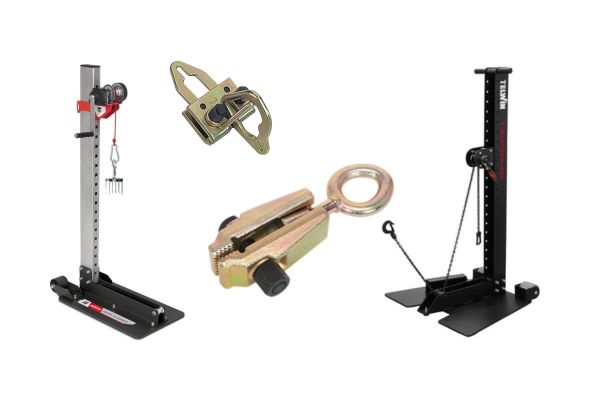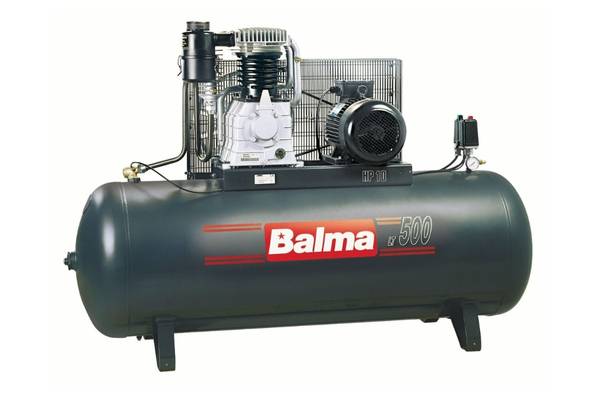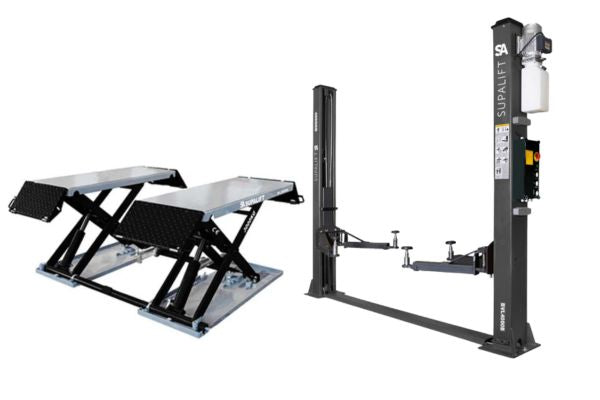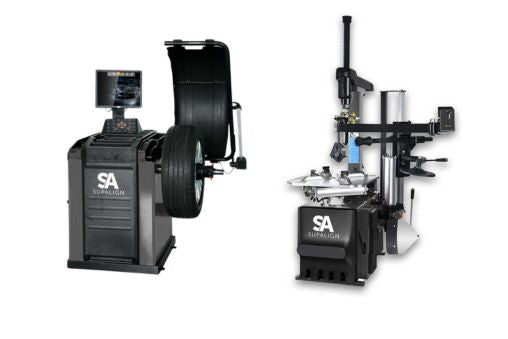NEW Glue Pulling Systems- In Stock!
NEW Glue Pulling Systems- In Stock!
BODYSHOP
WORKSHOP
WELDING
TOOLS
SAFETY

Choosing the BEST TIG Welder!
August 26, 2024 6 min read
How to Choose the Best TIG Welder For Automotive or Hobby use.
Selecting the right TIG welder can help in the ease and quality of your TIG welding . Whether you're a professional or a hobbyist, understanding the key factors will help you make an informed decision and possibly keep some money in your pocket. Here we look at the essential considerations when choosing a TIG welder for collision repairs and automotive welding .

Power Supply Compatibility
The available power supply is crucial in determining the TIG welder you can use:
- 13A standard domestic 230V plug: Suitable for lower amperage machines
- 32A 230V power supply: Ideal for most industrial welding power sources
- 3 phase 400V mains supply: Required for larger machines.
That's not to say a high powered 230V mig welder wont run on 13A domestic plug it would depend on the current output you are welding at. Most inverter welders will run at 140-160 amps on a domestic 13A plug without blowing the fuse , but if you want top power you will need the full 16A or 32A supply
Material Considerations
AC or DC? Your welding material dictates the type of TIG welder you need!
- DC TIG welders: More affordable, suitable for Steel, Stainless Steel, and Titanium
- AC/DC TIG welders: Necessary for Aluminium welding due to the cleaning action provided by AC current
To weld the body panels of a vehicle you require DC ONLY and at very low amps (25-50A). Th emain thing to consider here though is your joint preperation, ensure your joints are perfectly alligned with no gaps as this makes it more difficult to weld. Lap joints are perfect for TIG welders
To weld an aluminium body panel you require AC-DC machines. One thing to be aware of here is that you CANNOT WELD on the vehicle with you TIG welder in AC (aluminium) mode, the continous HF can destroy sensitive electronics on the vehicle unless bonded down, and even then it can still happen.

Material Thickness and Amperage
The thickness of the material determines the required amperage. A general rule for mild steel is approximately 40 amps per mm of parent material.
When TIG welding aluminum, a common rule of thumb is to set the amperage to about 40 amps per millimeter of material thickness. For instance, if you're working with aluminum that is 3 millimeters thick, you would typically use approximately 120 amps.
However, this guideline isn't perfectly linear for thicker materials. As the thickness increases, the required amperage may not scale directly. For example, welding a 10-millimeter thick piece of aluminum might require around 280 amps, rather than the 400 amps suggested by the basic rule. Additionally, the type of joint can influence the necessary amperage. T-joints, where heat can dissipate in multiple directions, might need more amperage compared to butt joints, where heat flows in fewer directions.
It's also important to consider other factors, such as the joint configuration, the use of foot pedals or fingertip controls for dynamic amperage adjustment, and the specific features of the welding equipment being used.
Recommended
| Thickness (mm) | Recommended Amps |
|---|---|
| 1 | 40 |
| 2 | 80 |
| 3 | 120 |
| 4 | 160 |
| 5 | 200 |
| 6 | 240 |
| 7 | 280 |
| 8 | 320 |
| 9 | 360 |
| 10 | 400 |

Control Interface
TIG welders offer different control options:
- Analogue controls: Simple dials for amperage and post flow
- Digital controls: Advanced settings through digital displays or multiple dial
Digital Panels
A digital TIG welder panel as the name suggests has a digital display and some of them can get quite sophisticated. The main benefit here though is that you can have programmes pre installed into the panel enabling quick setup or an easy mode to the best settings. Digital TIG Welder panels may have a clearer view and an easier to understand synergic graph giving a clearer indication of the settings. A synergic graph is basically a graph of what happens after you have pressed the torch trigger and it includes functions such at Pre Gas, Slope Up, Weld Amps, Slope Down and Post Flow. They give you a lot more functions and some the option to programme and set jobs (quick settings) for even faster implementation.
The downside to some digital panels is that they can get very complicated to navigate with settings in different areas. Ive also found some to be difficult to slect and adjust meaning you think your adjusting the desired setting but yoy are in fact moving another? Actually playing with the welder and getting instruction on its settings and controls is imperativ.

Analogue Panels
These types of panels are far simpler with less visuals, some with only one digital display showing the amos or setting that your adjusting. Most of the early Chinese manufactured AC-DC TIg welders had different button for a different setting. This can make it easier to set but also makes it easier to inadvertently move a setting.
These types of machine are becoming rarer now as most manufacturers move toward digital panels completely.
Duty Cycle
The duty cycle indicates the percentage of time a welder can operate at a given amperage before needing to cool down. For example, "120A @ 60%" means the welder can run for 6 minutes out of 10 at 120A. check out my post on what does duty cycle mean on a welding machine and this will explain it in more technical terms but essentually looking at the duty cycle will give you an indication of the quality of the welder and its ability to perform welds at a prolonged period. Use the duty cycle stated on the rear of the machine to compare your possible purchases against each other to see which offers the best amp per buck.

Pulsed welding
The pulsed function on a TIG welder is particularly beneficial for welding stainless steel due to its ability to control heat input and improve weld quality. Here are the primary reasons why the pulsed function is important for welding stainless steel.

Reduced Heat Input
Stainless steel has a low thermal conductivity, which means it retains heat in the area being welded. This can lead to warping and distortion if too much heat is applied. Pulsed TIG welding reduces the overall heat input by alternating between high (peak) and low (background) current levels. This helps to maintain the structural integrity of the stainless steel and minimizes the risk of distortion and carbide precipitation, which can lead to rust.

Improved Weld Quality
By pulsing the current, the weld puddle is agitated, which enhances the molecular grain structure of the weld. This results in a stronger and more uniform weld. Additionally, pulsing can narrow the weld bead and increase penetration, which is particularly useful for achieving high-quality welds on thin stainless steel sheets. Increased

Better Control and Precision
Pulsed TIG welding allows for better control over the welding process. It helps in maintaining a stable arc and provides better directional control, which is crucial when welding stainless steel to avoid overheating and ensure precise weld placement. Higher Travel Speeds: The pulsed function can also increase travel speeds, which reduces welding time and improves productivity.
Functions and Adjustability
Higher quality TIG welders often offer a wider range of adjustable parameters, allowing for greater control over arc characteristics. Advanced features may include:
- AC balance these are to be found on AC-DC sets only and its used for aluminium welding.
- AC frequency used to increase or decrease the heat inputs per second
- Pulse settings, a must if you want to weld thin materials in either aluminium or ferrous materials. its also a must for welding stainless steel.
- Pre and post flow gas control

Portability
Consider whether you need a portable TIG welder for on-site repairs or a stationary unit for heavy-duty fabrication in a workshop. For site the weight of the unit is important but also should be the ability for the welder to weld in these conditions. a good thing to lok for is if the TIG welder is IP26 rated. The IP26 rating on a welder indicates the level of protection the equipment has against solid objects and liquids. The IP (Ingress Protection) rating is a standardized measure used to define how well an enclosure is protected against the intrusion of solid objects and moisture.
Choosing a TIG Welder for automotive use depends really if you want to weld steel only or both steel and aluminium. If its both the most good quality TIG welders with basic functions will enable you produce good welds on both materials. Ih however you want to weld stainless exhausts or an engine block, TIG Welders with more functions, power out put and maybe advanced wave features such as saw too or square wave may be beneficial.
By carefully considering these factors, you can select a TIG welder that perfectly suits your needs, whether you're tackling professional projects or pursuing welding as a hobby. If you need any help then please dont hesitate to contact us and speak to an experienced engineer.
Are you interested in a brand new TIG welder? Contact Us Today!
Leave a comment
Comments will be approved before showing up.

















































